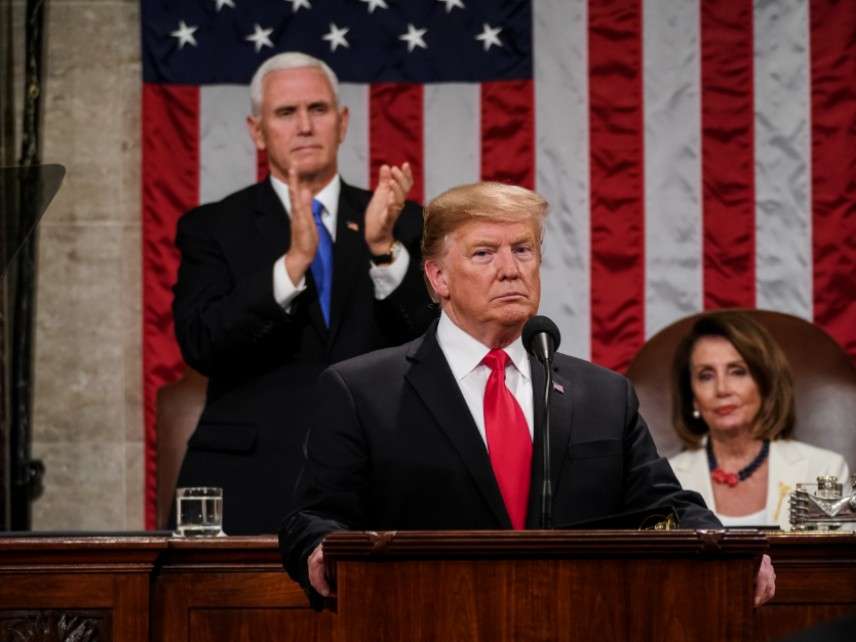Trump's 'Right To Try' Law Has Helped at Least Two People So Far. Give Credit Where It's Due.
But there's a long way to go before patients have control over their own medical care.

President Donald Trump listed his signing of a federal "Right to Try" bill during Tuesday night's State of the Union address. "To give critically ill patients access to life-saving cures, we passed very importantly, right to try," he said.
To Trump's credit, at least two people* in the U.S. have been granted access to an experimental therapy under the law he signed in May 2018. Right to Try allows patients diagnosed with a "life-threatening disease" to receive directly from a pharmaceutical company an experimental drug that has begun clinical trials but has not been approved by the Food and Drug Administration.
Bloomberg News reported in January that a California man diagnosed with glioblastoma, a type of brain cancer that is generally fatal within two years of diagnosis, had been granted access in November 2018 to a therapy called Gliovac, made by the Belgian drug company Epitopoietic Research Corporation (ERC).
"The patient's family went to ERC to request the therapy after he didn't qualify for the experimental study of Gliovac or any other trial that was underway," Bloomberg News reported.
Early Wednesday morning, Jennifer Tiedemann of the Goldwater Institute, an early supporter of right to try laws, emailed to let me know that as of Tuesday a second patient was publicly known to have received treatment under the law. Matt Bellina, a former Navy pilot who suffers from ALS and is one of the namesakes of Trump's law, announced on his Facebook page yesterday that he's been receiving the experimental therapy NurOwn, which is in phase III clinical trials, for roughly a month.
"Because this is an investigational therapy we don't know what tomorrow will bring but for now we are feeling incredibly blessed," Bellina wrote.
Two cases in just under a year is not quite what Right to Try supporters imagined; in the wake of the bill's signing, some supporters talked of hope for "millions" of patients. But it's also not the bioethical free-for-all critics feared—right to try "opens the gate to a dangerous, uncharted pathway for accessing experimental medications that have not been shown to be safe or effective," one group said.
Gliovac is in Stage 2 human trials, which means the anonymous California man is one of roughly two dozen or so people currently taking the drug. His therapy is being overseen by Daniela Bota, the co-director of the U.C., Irvine School of Medicine Comprehensive Brain Tumor Program, which means he's likely receiving the best care available for someone with this disease.
ERC's Joe Elliott told Bloomberg that there have been no side effects in the trial thus far. And despite concerns that Right to Try would lead to pharmaceutical companies charging retail prices for unapproved therapies, Elliot says the California man is paying nothing for access to Gliovac, which will conclude trials within the next 18 months. The median survival time for glioblastoma? 15 months.
The law is working for at least two people. Here are some likely reasons why it's not working for more.
*This post originally stated that only one person was receiving an experimental therapy under the federal Right to Try law.



Show Comments (7)